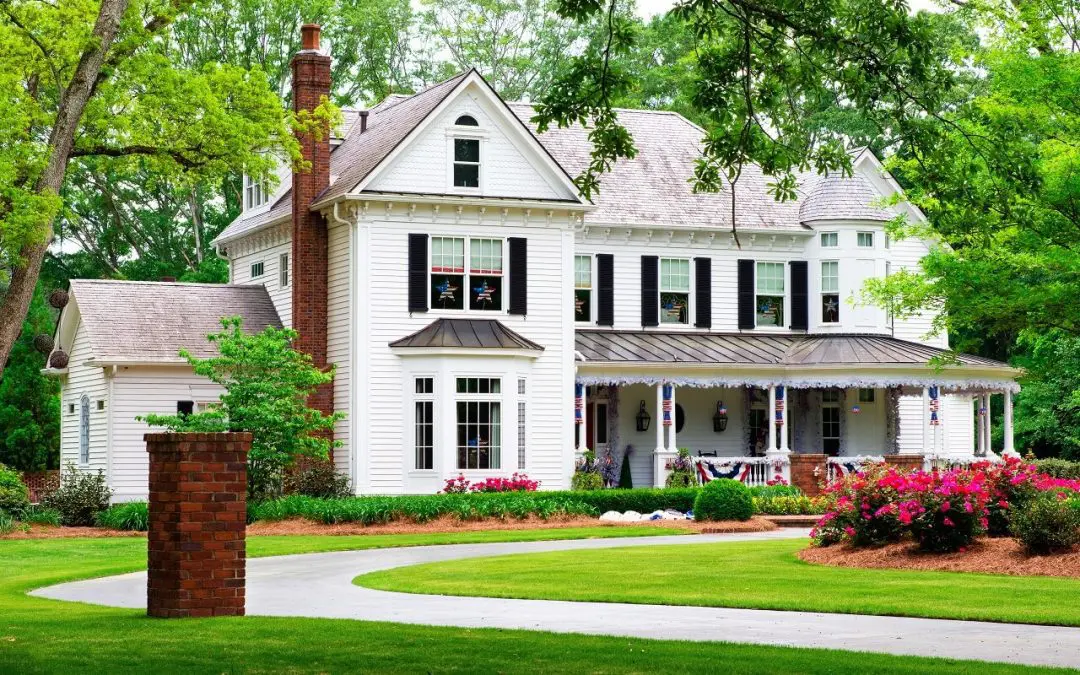Trees are a valuable addition to any property. However, like any other aspect of homeownership, trees require regular maintenance to ensure they remain healthy and safe. In this blog post, we’ll explore the essentials of tree maintenance for homeowners, covering everything from planting and watering to pruning and pest control.
Part of Tree Maintenance is Planting the Right Tree
Choosing the right tree for your landscape is the first step in successful tree maintenance. When selecting a tree species, consider the climate, soil type, and available space. Think about the tree’s mature size, as planting a large tree too close to your home or power lines can lead to problems down the road. Consulting with a local arborist or nursery can help you make an informed decision.
Watering and Mulching
Proper watering is crucial for the health of your trees, especially during the first few years after planting. Young trees need consistent moisture to establish strong roots. Water deeply and less frequently rather than giving your tree frequent shallow watering. This encourages roots to grow deeper into the soil.
Mulching around the base of the tree can help retain moisture, regulate soil temperature, and prevent weeds. However, be careful not to pile mulch against the tree trunk, as this can lead to rot and other issues. An ideal mulch layer is about 2-4 inches thick and spread out to the drip line.
Pruning and Shaping During Tree Maintenance
Pruning is essential for maintaining the structural integrity and aesthetics of your trees. It’s best to prune during the tree’s dormant season, typically in late winter or early spring, before new growth begins. Remove dead, diseased, or damaged branches and any branches that cross or rub against each other.
When pruning, make clean cuts at a slight angle just outside the branch collar, the swollen area where the branch meets the trunk. Avoid leaving stubs or cutting too close to the trunk, as this can damage the tree and make it vulnerable to disease.
Pest and Disease Management
Keeping an eye out for signs of pests and diseases is an important part of tree maintenance. Common issues include aphids, scale insects, and fungal infections. Early detection and treatment can prevent these problems from becoming severe. Depending on the issue, treatment options may include natural predators, horticultural oils, or specialized treatments recommended by a professional arborist.
Regularly inspect your trees for signs of distress, such as discolored leaves, unusual growth patterns, or visible pests. If you notice anything unusual, consult an expert to diagnose the problem and recommend the appropriate action.
Protecting Trees from Damage
Trees can be susceptible to damage from construction, lawn equipment, and weather conditions. Protect the root zone by avoiding heavy machinery near the tree and being mindful of where you dig. Installing protective barriers can help prevent damage during construction projects.
During severe weather, trees may be vulnerable to wind and lightning damage. Pruning to remove weak branches reduces the risk of storm damage. In some cases, installing lightning protection systems may be advisable for large or valuable trees.
Long-Term Care and Monitoring
Tree maintenance is an ongoing process. Regularly monitor your trees for potential issues. As trees mature, their maintenance needs may change. For example, older trees may require more frequent pruning or additional support to prevent limb failure.
Engaging with a professional arborist for periodic check-ups can provide valuable insights into the health of your trees and help you make informed decisions about their care. A well-maintained tree enhances your property’s value and curb appeal and contributes to a healthier environment.
Trees are an asset for your property’s landscape, providing beauty, shade, and ecological benefits. With diligent care and maintenance, you can keep them at peak health. Pay attention to the trees on your property and address warning signs to support their strength and longevity.
Tree Maintenance FAQs
What is the best time of year to plant a tree?
The best time to plant a tree is during its dormant season, typically in late fall or early spring. This timing allows the tree to establish its roots before the stress of hot summer temperatures or cold winter weather.
Are there specific pruning techniques for different types of trees?
Yes, different types of trees have specific pruning needs. For example, fruit trees benefit from annual pruning to promote fruit production and remove diseased wood, while ornamental trees may require selective pruning to maintain shape and health. Always research or consult with an expert about the specific needs of your tree species.
How do I properly dispose of tree trimmings and fallen branches?
Tree trimmings and fallen branches can be composted, chipped into mulch, or taken to a green waste facility. Check with your local waste management services for disposal guidelines and options. Some communities offer curbside pickup or designated drop-off locations for yard waste.
How can I use companion planting to benefit my trees?
Companion planting involves growing certain plants near your trees to enhance their growth. Plants like clover can fix nitrogen in the soil, which benefits the tree. Additionally, ground covers can help prevent soil erosion and reduce weed competition around the tree’s base.
HomeSpec offers inspections to customers in North Mississippi and Southwest Tennessee. If you’re buying or selling a home, contact us to request our services.

